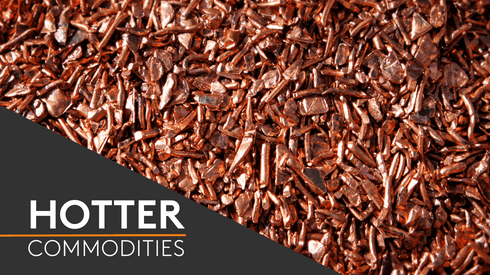Should BHP Billiton – the owner of Escondida, the world’s largest copper mine – have waited for an update on the situation at the second-largest mine before agreeing supply contracts for the second half of the year?
That was the question the copper concentrates market was exercised by on Wednesday June 13, as Freeport-McMoRan declared force majeure at the Grasberg mine in Indonesia.
Market sources said that BHP agreed treatment and refining charges of $72 per dry metric tonne/ 7.2 cents per lb with a Japanese smelter, conceding $2/0.2 cents over the terms it agreed at the start of the year.
The terms are, however, better than prevailing spot terms of as much as $80/8 seen before the Grasberg outage, suggesting that the lost production has been priced in.
Still, as rumours that the miner had settled started to spread last week, some observers expressed surprise that BHP would conclude deals ahead of an update on Grasberg.
At the start of the year, analysts expected that the market would loosen further in the second half as mine supply ramped up, the peak demand season passed and smelters closed for maintenance, and on that rationale it makes sense to settle earlier rather than later.
But the stoppage at Grasberg and the continuing outage at Rio Tinto’s Bingham Canyon mine are causing significant wear to the disruption allowances that analysts have built into their supply and demand models.
While early reports indicated that the mine may restart within two months, analysts and observers are now working to the assumption that it will take longer to bring Grasberg back online.
Macquarie assumes that the mine will lose 110,000 tonnes of contained copper production as a result of the outage, which would equate to an 80-day stoppage, based on the daily average loss rate of 1,360 tonnes announced by Freeport on Wednesday.
Assuming Grasberg concentrates have an average copper content of 27%, that would translate to a 400,000-tonne drop in concentrate supply, one trader told Metal Bulletin.
Other factors
But while the outage may have played in BHP’s favour, the concentrates marketing team will have had plenty of other factors to consider as they decided on their outlook for the next six months.
Halfway through what is becoming the biggest news week for the copper concentrates market since the mating season, BHP may feel vindicated in its decision to settle on those terms.
While the demand outlook has been boosted by the issuance of a licence that allows Sterlite’s Tuticorin smelter in Tamil Nadu to restart, it is possible that the future of operations will be thrown back into doubt in mid-July, when environmental experts will submit a report on the plant to the Supreme Court, as newswires reported on Monday.
Jinchuan Group will also be buying fewer concentrates in the interim after an equipment failure at its Gansu plant prompted it to declare force majeure earlier this month, market participants believe.
And on the supply side, there was confirmation that Rio Tinto will ship the first concentrates from Oyu Tolgoi – its $6.6 billion copper-gold mine in Mongolia – on Friday, bringing a new source of supply to China’s doorstep just as Grasberg halts deliveries.
It is also worth remembering that even after the stoppages at Grasberg and Bingham Canyon, mine supply has nevertheless expanded above the market’s already-strong expectations.
As Macquarie pointed out in a recent note, BHP Billiton was a chief contributor to the stronger-than-expected mine supply seen in the first quarter, as production at Escondida jumped 27%, exceeding the company’s targets for a 20% increase over the full year.
So while concentrates traders may be willing to take a punt that the market will tighten on the Grasberg outage, BHP may equally feel it is a safe bet that it and its peers will deliver on their promises to increase mine supply.
Unfortunately for BHP, the supply will come over and above demand, and its terms for the second half reflect that.
Mark Burton
mburton@metalbulletin.com
Twitter: @mburtonmb




